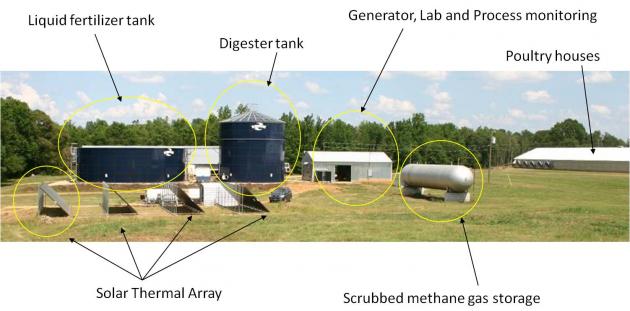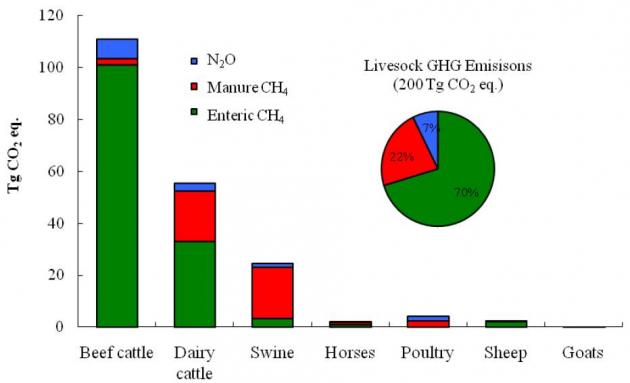![]() Waste to Worth home | More proceedings….
Waste to Worth home | More proceedings….
Abstract
The increased cost and decreased availability of traditional poultry bedding material, such as pine shavings, has facilitated the need to identify alternative bedding materials for poultry growers. The objective of this study was to evaluate a cellulose by-product from the paper manufacturing industry on its comparability to pine shavings on broiler production performance standards and litter quality parameters.
The experimental design consisted of 25 pens (3.7 m2 each) containing 55 Cobb broilers (0.07 m2/bird) per pen. Five treatments with five replicate pens per treatment were set up to evaluate varying levels of cellulose inclusion as bedding. The five cellulose treatments consisted of 0% (Control, 100% pine shavings), 25%, 50%, 75% and 100% cellulose by-product. The first phase of the experiment included litter moisture, litter pH, and footpad dermatitis (FPD) scores at Day 7. At Day 7, the mean litter moisture (%) of the Control (23.9) and 25% (23.9) treatments were not significantly different from the 50% (16.9) treatment, but were significantly greater than the 75% (15.0) and 100% (14.8) treatments. At Day 7, the mean percentage (%) of birds with no footpad downgrades in the 100% (99) and 75% (95) treatments were not significantly different from the 50% (87) treatment, but were significantly greater than the 25% (76) and Control (66) treatments. An evaluation of litter moisture versus FPD scores produced a correlation coefficient of 0.73, indicating a strong cause-and-effect relationship between increasing litter moisture and incidence of FPD.
Based on phase one results, the cellulose by-product is at least comparable if not superior to pine shavings as a broiler bedding material based on litter moisture and subsequent incidence of FPD during the brooding phase of broiler production.
Why Explore New Sources of Broiler Bedding?
Paper mill wastewater cellulose residuals are a solid waste accumulation concern for the paper manufacturing industry and for local municipalities. Traditional bedding material supplies for the commercial broiler industry in the southeastern United States, namely pine wood shavings, has declined in availability with the drop in new housing starts and competition for the material from other wood product manufacturing and landscaping industries. With the decline in availability comes an increase in cost of the remaining material that is available for broiler growers to utilize as bedding material. The purpose of this study was to investigate the applicability of utilizing a cellulose-based wastewater by-product from a large paper manufacturing plant as a bedding material for commercial broiler production housing.
What Did We Do?
Paper mill wastewater cellulose by-product (residual short fibers) was tested at the University of Georgia Poultry Research Center in Athens, Georgia, in a live-bird pen trial wherein the suitability of the wastewater material as a poultry bedding was determined by evaluating: 1) broiler performance as indicated by body weight gain, feed efficiency, and footpad (paw) scores, and 2) material performance as influenced by bulk density, moisture content, ammonia evolution, and accumulation of compacted litter or “litter cake”. The experimental design consisted of 25 pens (3.7 m2 each) containing 55 Cobb broilers (0.07 m2/bird). Five treatments consisted of approximately 8 cm depth of 0% (Control, 100% pine shavings), 25%, 50%, 75% and 100% cellulose by-product with five repetitions. The study was designed to replicate commercial conditions of stocking density and water delivery as closely as possible to compare the pine shaving control to the varying levels of cellulose inclusion.
What Have We Learned?
Following the 6-week trial, wherein the broilers were raised to standard market age, it was determined that there were no significant differences in body weight or feed efficiency between the bedding treatments. This would indicate that the cellulose material did not impede bird growth or performance. The wastewater material did tend to compact or cake more readily than the pine shavings, though it was not indicative of any change within the final litter moisture content within each treatment. An evaluation of litter moisture versus footpad score produced a correlation coefficient of 0.73, indicating a strong cause-and-effect relationship between increasing litter moisture and decreasing footpad quality. Early in the trial, footpad scores were significantly better within the higher level cellulose treatments than the control, though by the end of the trial there were no differences between the treatments. No differences in ammonia generation were notable between the treatments. The wastewater by-product is at least as comparable if not superior to pine shavings on the incidence of footpad dermatitis. Final conclusions on the trial would indicate that the wastewater cellulose by-product is comparable to pine shavings as a bedding material for broiler production and would perhaps be best utilized as a blending product to reduce the amount of pine shavings needed for optimal bedding depth. The initial raw material is high in moisture at over 50%, and will need to be preconditioned to a level below 20% total moisture before placement into broiler housing before it can be considered suitable for use as bedding.
Future Plans
Future plans will include assisting the paper milling industry in preparing the by-product for commercial-scale field tests under standard production environmental conditions and to assess the economic potential for reduced bedding costs and improved sale of higher grade paws through use of the cellulose-based material.
Authors
C.W. Ritz, Professor, The University of Georgia, critz@uga.edu
B.H. Kiepper, Assistant Professor, The University of Georgia
B.D. Fairchild, Professor, The University of Georgia
The authors are solely responsible for the content of these proceedings. The technical information does not necessarily reflect the official position of the sponsoring agencies or institutions represented by planning committee members, and inclusion and distribution herein does not constitute an endorsement of views expressed by the same. Printed materials included herein are not refereed publications. Citations should appear as follows. EXAMPLE: Authors. 2013. Title of presentation. Waste to Worth: Spreading Science and Solutions. Denver, CO. April 1-5, 2013. URL of this page. Accessed on: today’s date.







